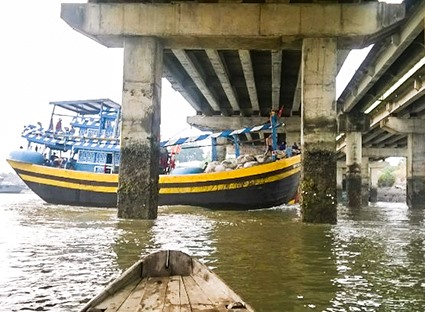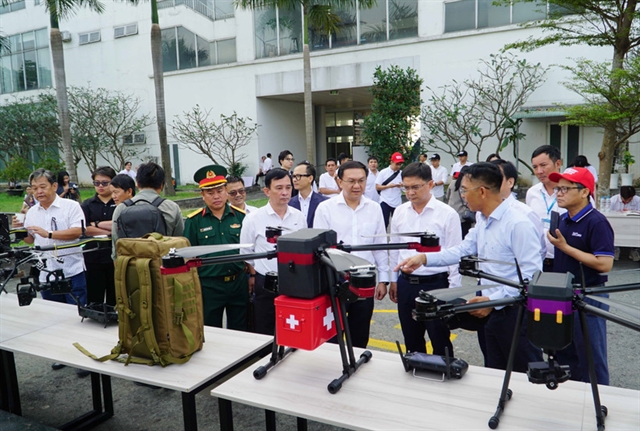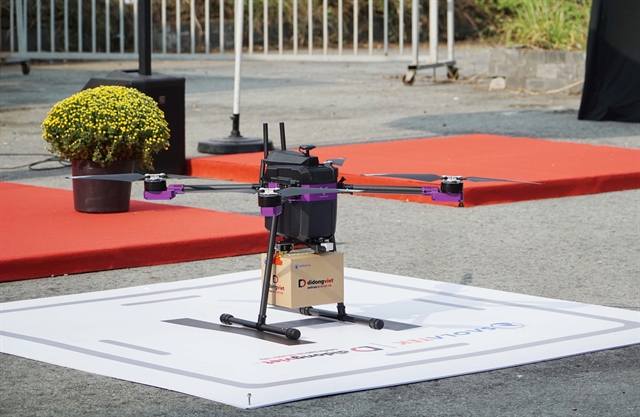 Society
Society

Many bridges in southern Bà Rịa-Vũng Tàu Province have restricted navigational clearance height and width, posing potential risks of accidents for vessels and affecting the development of local waterway transport.
 |
| A fishing vessel risks hitting the Cỏ May Bridge in Bà Rịa-Vũng Tàu Province as it goes under. — Photo baobariavungtau.com.vn |
BÀ RỊA VŨNG TÀU — Many low and narrow bridges in southern Bà Rịa-Vũng Tàu Province are posing potential risks of accidents for vessels and affecting the development of local waterway transport.
Since 2013, sedimentation at Cửa Lấp Estuary in Long Điền District’s Phước Tỉnh Commune has made it difficult for vessels to go through it to the sea. Therefore, vessels pass under Cỏ May Bridge to get to the sea.
This has raised concerns over traffic safety due to the high number of vessels passing under the bridge, with its low height and flimsy piers.
Early last month, hundreds of vessels got stuck and could not pass through the bridge due to high tides.
Nguyễn Thế Hùng, director of the provincial Inland Waterway Port Authority, said that vessels with high capacity could not pass under Cỏ May Bridge and would get stuck under it if they tried.
Phước Tỉnh Commune has the highest number of offshore vessels in the province – nearly 2,800 vessels. Of the figure, more than 1,000 have capacity between 90 and 750 CV.
Trần Đình Hưng, captain of SG6973 barge said that he found it difficult to drive his barge under the bridge.
“It’s really dangerous to see some large vessels trying to go under the bridge,” he said, adding that he wanted a higher bridge.
Trần Văn Minh, captain of BV976515 vessel agreed, saying he and his crew had to pull things down, lower the vessel’s antenna and crane to get it under the bridge.
Trần Tuấn Anh, monitor of Cỏ May Bridge said the water flow was strong, making vessels tilt when passing under the bridge and raising the risk of collision with the bridge piers.
He said authorities had to mobilise workers to be on duty around the clock to monitor and guide vessels under the bridge safely. Information on the bridge’s navigational clearance height and width had been announced to avoid accidents.
Rạch Bridge in Tân Thành District’s Phước Hoà Commune is another example with restricted navigational clearance height and width. With a height of 3.5 metres and width of 34 metres, most vessels struggle to pass.
Hùng, director of the provincial Inland Waterway Port Authority, said that upgrading bridges would need big funds. Initially, the Ministry of Transport asked local authorities to monitor vessels around the clock at low bridges and install warning systems.
Local authorities were asked to strengthen training of crew members to ensure they were qualified to drive vehicles safely. — VNS




